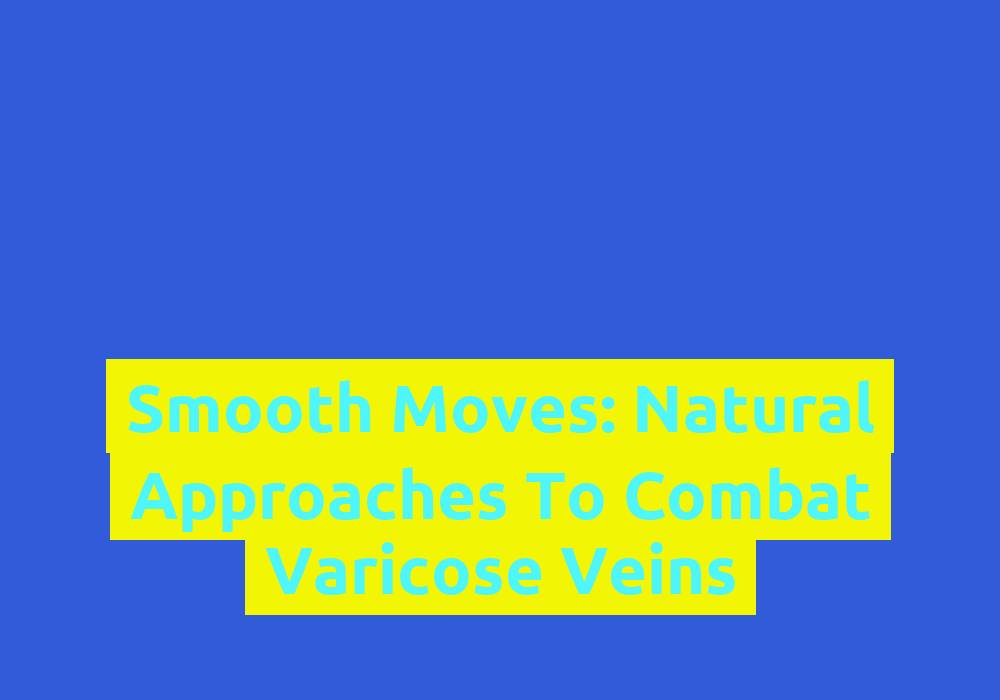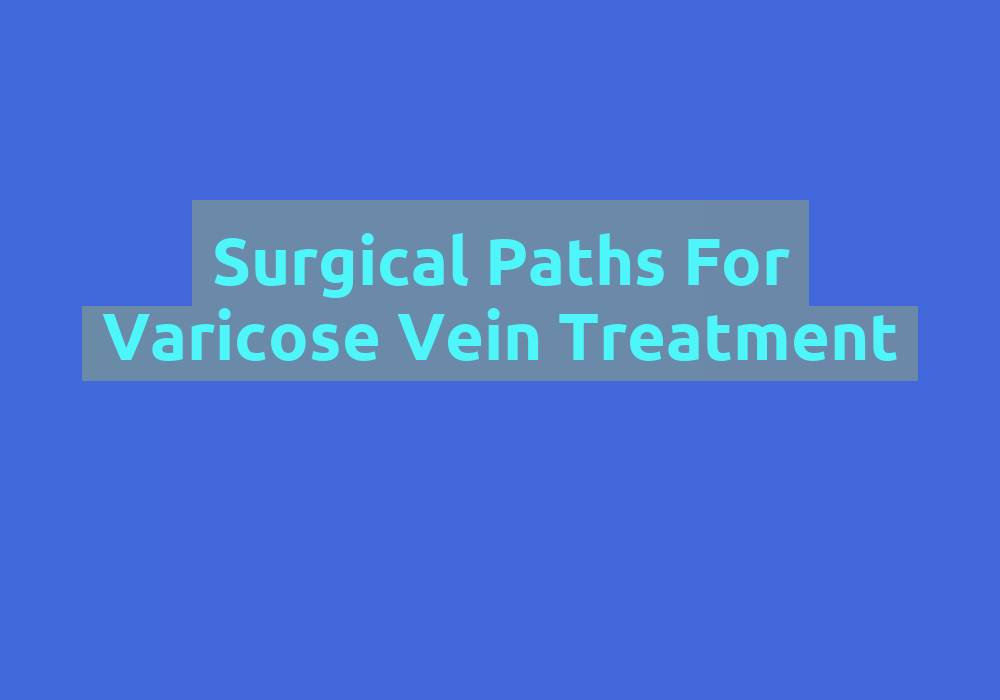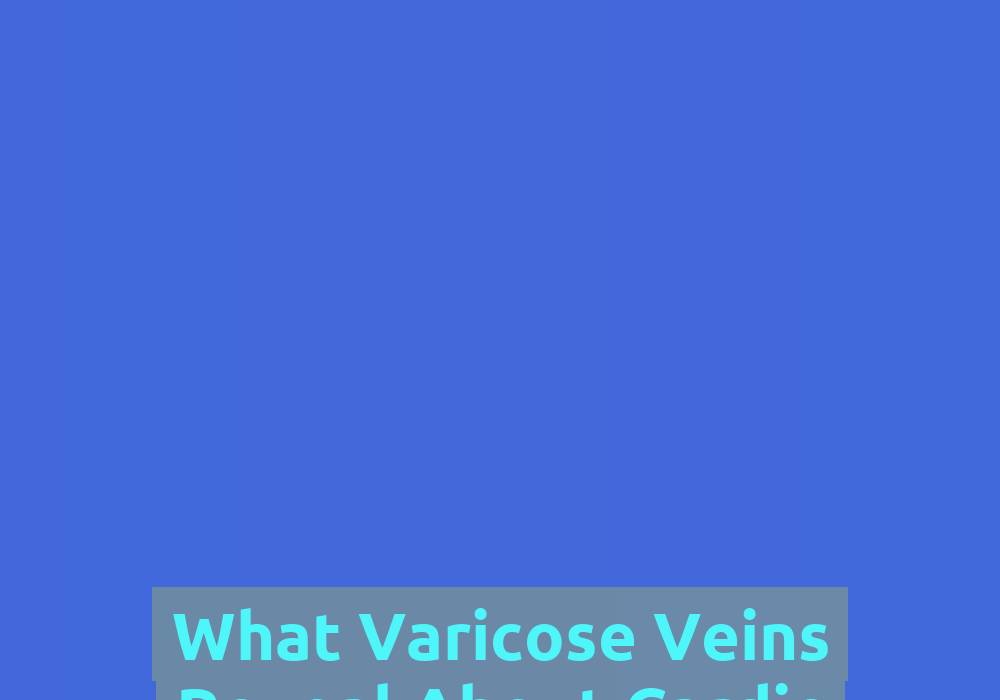Erase the Lines: Non-Surgical Solutions for Varicose Veins

Varicose veins are a common condition that affects millions of people worldwide. These enlarged and twisted veins, often appearing blue or purple under the skin, are not only unsightly but can also cause discomfort, pain, and other complications. While surgery used to be the primary treatment option for varicose veins, advancements in medical technology have paved the way for non-surgical solutions that are equally effective and minimally invasive. In this article, we will explore some of these non-surgical treatments that can help erase the lines and restore the health and beauty of your legs.
Understanding Varicose Veins
Before delving into the non-surgical solutions, it’s important to have a basic understanding of varicose veins. Varicose veins occur when the valves in the veins that regulate blood flow become weakened or damaged. This causes blood to pool in the veins, leading to their enlargement and the characteristic appearance of varicose veins.
While anyone can develop varicose veins, certain factors increase the risk, including age, gender (as women are more prone to developing them), pregnancy, obesity, prolonged standing or sitting, and a family history of the condition.
Varicose veins may cause a range of symptoms such as pain, swelling, itching, and aching legs. In severe cases, complications like blood clots or ulcers may arise. It is important to seek treatment for varicose veins to alleviate these symptoms and prevent potential complications.
Non-Surgical Solutions for Varicose Veins
- Endovenous Laser Ablation (EVLA): EVLA is a highly effective non-surgical procedure that uses laser energy to seal off the affected vein. During the procedure, a small laser fiber is inserted into the vein, delivering controlled heat that causes the vein to collapse and eventually fade away. EVLA is considered a safe and minimally invasive treatment with a high success rate, offering long-lasting results.
With EVLA, the targeted vein is closed off, redirecting the blood flow to healthier veins, improving circulation and reducing the appearance and symptoms of varicose veins. This treatment can be performed in an outpatient setting, and patients can resume their daily activities immediately after the procedure.
- Sclerotherapy: Sclerotherapy is another popular non-surgical treatment for varicose veins. This technique involves injecting a specialized solution directly into the affected vein, causing it to shrink and gradually disappear. Sclerotherapy is particularly effective for smaller varicose veins and spider veins.
During the procedure, the solution irritates the lining of the vein, leading to the formation of scar tissue. This scar tissue closes off the vein, redirecting blood flow to healthier veins. Over time, the treated vein is reabsorbed by the body, resulting in improved appearance and symptom relief. Sclerotherapy is a quick procedure that can be performed in an outpatient setting, requiring no downtime.
- Radiofrequency Ablation (RFA): RFA is a non-surgical treatment that uses radiofrequency energy to heat and close off the problematic vein. Similar to EVLA, a catheter is inserted into the vein, and controlled heat is applied to seal it shut. RFA has been proven to be a safe and effective alternative to surgery, providing long-term relief from varicose veins.
During RFA, the heat generated by the radiofrequency energy causes the collagen in the vein walls to contract, leading to the closure of the vein. The body then naturally absorbs the closed vein, improving blood flow and reducing the appearance of varicose veins. RFA is performed in an outpatient setting and allows patients to resume their normal activities immediately after the procedure.
- Compression Therapy: Compression therapy is a conservative non-surgical approach to managing varicose veins. It involves wearing compression stockings or socks that apply pressure to the legs, improving blood flow and reducing symptoms.
Compression stockings work by gently squeezing the legs, which helps the veins and leg muscles move blood more efficiently. This reduces the pooling of blood in the veins and decreases symptoms such as pain, swelling, and fatigue. Compression therapy is particularly beneficial for individuals who are not suitable candidates for more invasive treatments or as a complementary therapy alongside other non-surgical procedures.
In addition to wearing compression stockings, elevating the legs while resting can further aid in reducing the symptoms associated with varicose veins. Elevating the legs above the heart level helps to counteract the effects of gravity and promote better blood circulation.
- Lifestyle Modifications: In addition to the aforementioned treatments, making certain lifestyle changes can significantly improve the appearance and symptoms of varicose veins. Regular exercise, maintaining a healthy weight, avoiding prolonged sitting or standing, and elevating the legs while resting can all contribute to better vein health. Additionally, wearing loose-fitting clothing and avoiding high-heeled shoes can help alleviate the pressure on the veins.
Regular exercise, such as walking or swimming, helps to improve circulation and strengthen the leg muscles, which aids in the prevention of varicose veins. Maintaining a healthy weight reduces the strain on the veins and lowers the risk of developing varicose veins.
Avoiding prolonged periods of sitting or standing is also crucial as it can lead to blood pooling in the veins. Taking breaks to walk or stretch throughout the day can help improve circulation and prevent the development or worsening of varicose veins.
Wearing loose-fitting clothing and avoiding high-heeled shoes reduces the constriction and pressure on the veins, allowing for better blood flow. It is important to choose comfortable, supportive footwear that promotes good circulation and does not restrict the movement of the feet and legs.
Seeking Professional Help
If you’re considering non-surgical solutions for your varicose veins, it’s crucial to consult with a qualified healthcare professional specializing in vein treatments. They can assess your condition, recommend the most suitable treatment option, and guide you through the process. Remember to ask about the potential risks, benefits, and expected outcomes of the chosen procedure.
A qualified healthcare professional will perform a thorough evaluation of your veins, taking into consideration your medical history, symptoms, and diagnostic tests such as ultrasound. Based on this assessment, they can provide personalized recommendations tailored to your specific needs.
Conclusion
Non-surgical solutions for varicose veins have revolutionized the field of vascular medicine, providing patients with effective and less invasive alternatives to traditional surgery. Whether you opt for endovenous laser ablation, sclerotherapy, radiofrequency ablation, compression therapy, or lifestyle modifications, these treatments can help erase the lines and restore the health and beauty of your legs. Don’t let varicose veins hold you back – explore these non-surgical options and take the first step towards healthier veins today.
Note: This article is for informational purposes only and should not be considered medical advice. Please consult with a healthcare professional before pursuing any treatments for varicose veins.
FAQ
Q: What are varicose veins?
A: Varicose veins are enlarged and twisted veins that appear blue or purple under the skin. They can cause discomfort, pain, and other complications.
Q: What are the risk factors for developing varicose veins?
A: Risk factors for varicose veins include age, gender (women are more prone to developing them), pregnancy, obesity, prolonged standing or sitting, and a family history of the condition.
Q: What are some non-surgical treatments for varicose veins?
A: Non-surgical treatments for varicose veins include Endovenous Laser Ablation (EVLA), Sclerotherapy, Radiofrequency Ablation (RFA), Compression Therapy, and lifestyle modifications.
Q: How can lifestyle modifications help with varicose veins?
A: Lifestyle modifications such as regular exercise, maintaining a healthy weight, avoiding prolonged sitting or standing, wearing loose-fitting clothing, and elevating the legs while resting can improve the appearance and symptoms of varicose veins.







